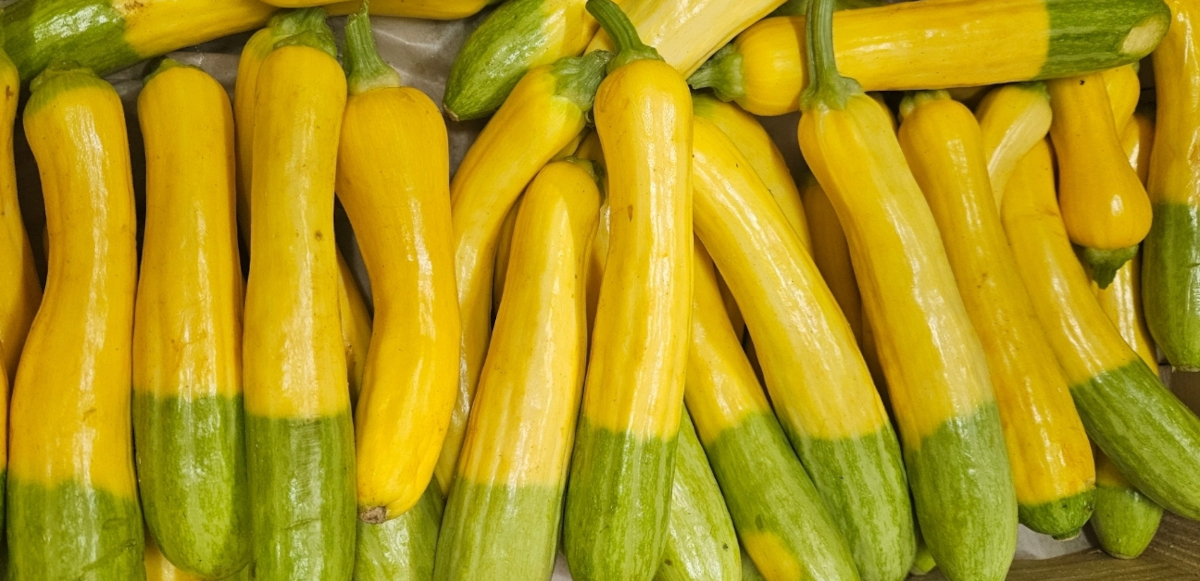
As the summer lingers and autumn beckons, September offers a magnificent array of British-grown vegetables and salad leaves at their absolute peak. For chefs seeking to refresh menus with both vibrant summer fare and the early earthy notes of autumn, this is a moment of extraordinary abundance.
September Headlines
Salad
Spanish Salad: Cucumbers, courgettes, aubergines, and peppers will start from early September, with volumes continuing to increase.
Dutch & Belgian Salad: As we near the end of the season prices will increase with reduced availability.
Heritage Tomatoes: As the UK Heritage tomato season winds down, prices will continue to rise with a drop in availability. French supply is also available, providing good quality mix, however prices are fluctuating.
Ginger
New Season Ginger: Due to start early September.
Herbs & Garlic
Popcorn shoots and apple blossom supply is short.
New season Spanish garlic will be arriving in the upcoming weeks.
Brassicas
Broccoli & Cauliflower: Supply is short due to hot weather and lack of rain. Steady rainfall is needed for these crops to recover, so high prices are expetced for some time.
Root Vegetables
New Season Tri-Coloured Carrots: Available from early September.
New Season Baby Piccolo Parsnips: Available from next week.
New Season Jerusalem Artichokes: Will be arriving from France at the beginning of September.
New Season UK Celeriac: Now available.
Beans
UK Fresh Peas & Broad Beans: Availability is drawing to a close as a knock-on effect from the hot weather.
Chillies
Long Red & Green Chillis: Dutch prices are rising with Spanish prices expected to follow suit.
Mushrooms
Core lines, exotics, and wild mushrooms are in strong supply and peak quality.
Corn
UK supply is limited due to hot weather and lack of rainfall.
Onions
After several weeks of imported red onions from Egypt, Spain, and New Zealand, we will be starting to switch back to UK supply from next week. Main crop onion harvest has started and, as expected, crops look variable with some very good fields and some not-so-good, depending on location and water availability throughout the season. We will know the overall results of the season towards the end of September. First impressions are that it’s not a vintage year but also not a disaster.
Potatoes
Last year, the potato crop suffered because it was just too wet. Crops were planted late in poor soil and weather conditions. We then had one of the wettest growing seasons on record. Fast forward 12 months, and there is the complete opposite situation. The UK has had the driest ever period from March to July, with England experiencing the driest Spring in over 100 years. This has meant there has been a significant lack of rain, with some of the UK growing area having received a fraction of their normal rainfall. Potatoes are normally made up of 80% water and need a lot of it to grow and yield well.
Because we had a dry, warm spring and the water table was so high, crops got off to a fantastic start. In fact, one of the best ever, with crops moving quickly through their growth stages. This has meant that early crops have yielded really well as they were mature enough to deal with the dry weather as it intensified. As we enter the ‘Main Crop’ period, some crops have fared less well. There is some positive news with growers that have access to plenty of water to irrigate, reporting that some crops are yielding 25-30t per acre with great skin finish and size.
Where water is an issue due to revoked extraction licences, lack of rainfall or a lack of their own private water availability, the are some horror stories of yields down as low as 6-8t per acre, where size is also a problem. Normally, potato crops would average somewhere in the region of 20t per acre. The dry weather also increases the likelihood of scab on the skin as well as increasing the dry-matter, which means the tubers are more susceptible to internal bruising during harvest, grading and storing. There could be some serious issues with quality and size for this season’s crop.
British Seasonal Vegetables and Salad Leaves in Peak Season in September
Aubergine
Aubergines have a soft, creamy flesh with subtle sweetness and gentle bitterness when grilled or roasted.
Pairing Suggestions: They pair well with garlic, basil, tomatoes, miso, tahini, robust oils.
Dish Idea: A char-grilled aubergine terrine layered with vine-ripened tomatoes and basil oil—great as a starter or side.
Broccoli (Calabrese / Autumn-sprouting)
Broccoli has a sweet and nutty, especially when steamed or charred; florets nicely browned.
Pairing Suggestions: Great with lemon zest, anchovy garlic, Parmesan, chilli, toasted seeds.
Dish Idea: Charred broccoli salsa verde with anchovy and lemon, paired with grilled fish or as a piquant garnish.
Beetroot
Beetroot has an earthy, sweet flavour that deepens upon roasting. Its vibrant colour enhances any dish and provides a unique taste experience.
Pairing Suggestions: Excellent with goat cheese, walnuts, and citrus, beetroot can also add a sweet touch when paired with horseradish or cumin.
Dish Idea: Serve a beetroot and goat cheese salad drizzled with balsamic reduction as a stunning starter or side dish.
Brussels Sprouts (early varieties)
Known for its tender, nutty sweetness with a gentle crunch when roasted or shaved raw.
Pairing Suggestions: Pair brussels sprouts with pancetta or bacon, chestnuts, sage, mustard vinaigrette.
Dish Idea: Warm shaved Brussels sprout salad with pancetta lardons and chestnut pieces, tossed in mustard dressing.
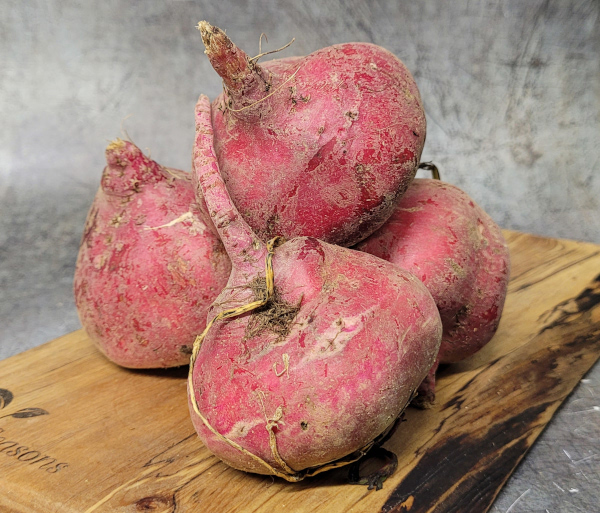
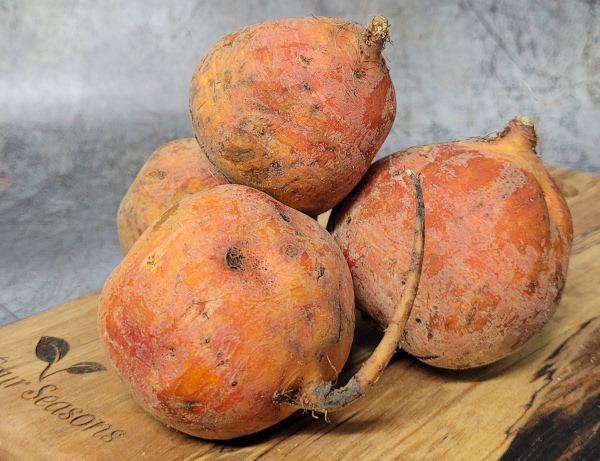
Celery
Celery is crisp and refreshing, with subtle anise-like aromatic notes.
Pairing Suggestions: Pair celery with blue cheese, apple, hazelnut, anchovy.
Dish Idea: Lyonnaise-style celery remoulade with green apple julienne and hazelnuts—perfect as a side or garnish.
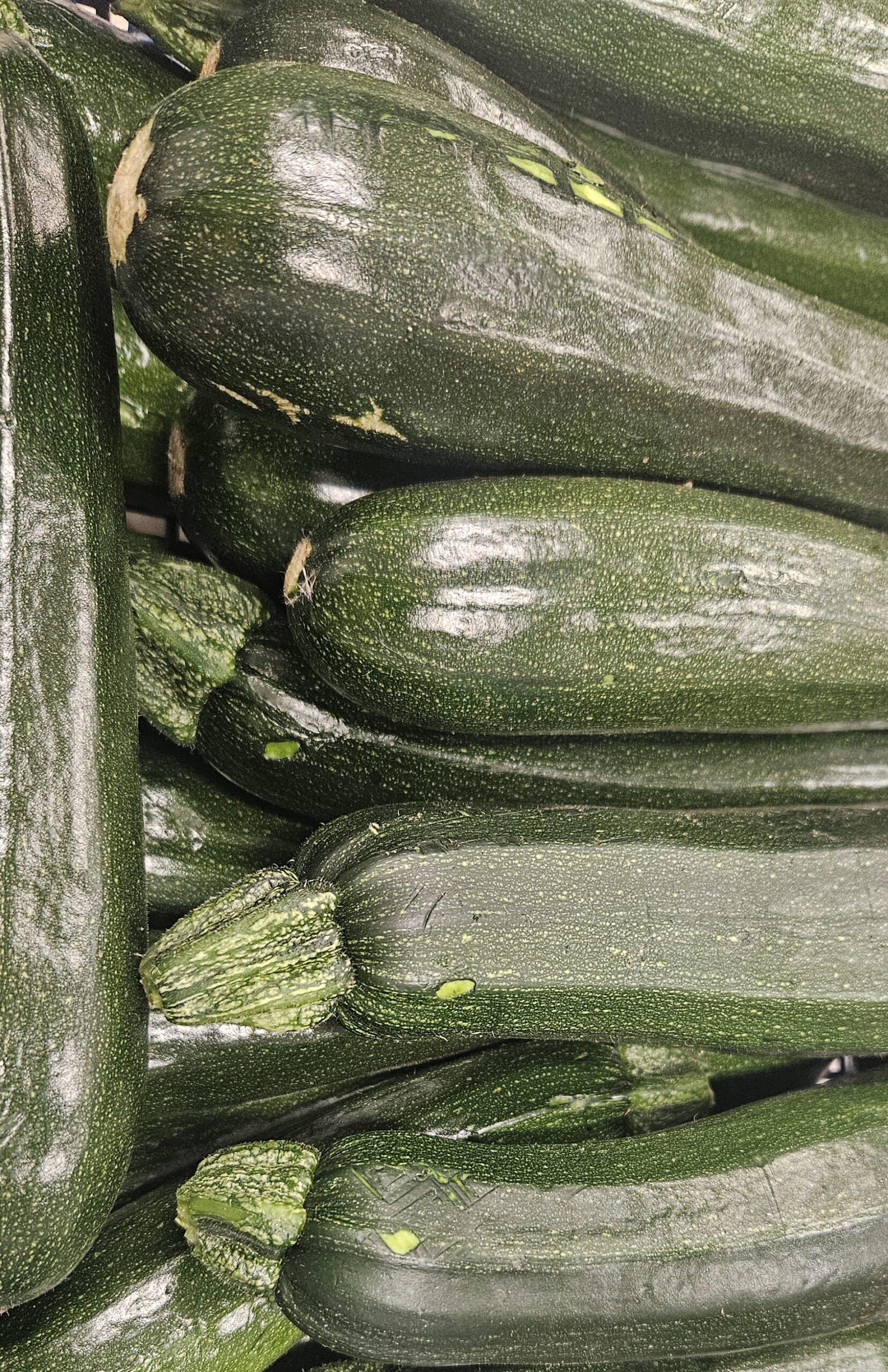
Courgettes & Summer Squash
Courgettes and summer squashes are among the most versatile vegetables of late summer and early autumn. When young and freshly picked, their flavour is mild, clean and slightly grassy, with a delicate sweetness that develops further when exposed to high heat.
Pairing Suggestions: They pair well with feta, mint, olive oil, lemon, tomatoes, garlic.
Dish Idea: Grilled courgette carpaccio with crumbled feta, mint chiffonade and lemon zest.
Endive
Endive is slightly bitter when raw, softens and becomes nutty when braised or roasted.
Pairing Suggestions: Endive pairs well with blue cheese, honey, walnut, bacon lardons.
Dish Idea: Gratin of chicory and taleggio, topped with walnut crumb—a refined vegetable side.
Cucumber
Cucumber brings a clean, cooling freshness to the plate, with a flavour profile that balances mild sweetness against a subtle vegetal bitterness, particularly in the skin.
Pairing Suggestions: Cucumber pairs naturally with yoghurt, dill, mint, and chives, making it an excellent base for light sauces and salads.
Dish Idea: A cucumber and dill relish served alongside smoked mackerel pâté on toasted rye—a bright, cooling contrast to the richness of the fish.
Leeks
Leeks are sweet, mild oniony flavour with creamy texture when braised.
Pairing Suggestions: Leeks pair naturally with cheese (Gruyère, cheddar), cream, bacon, thyme.
Dish Idea: Creamed leek ragout with a crumble of sharp cheddar—great atop toasted sourdough or as a rich accompaniment.
Kale
Kale is earthy and robust raw, mellows when sautéed or blanched with a satisfyingly chewy texture. when braised.
Pairing Suggestions: Kale pairs well with parmesan, garlic, chilli flakes, lemon, olives.
Dish Idea: Warm kale and garlic sauté, finished with Parmesan shavings and chilli oil—delicious alongside grilled meats.
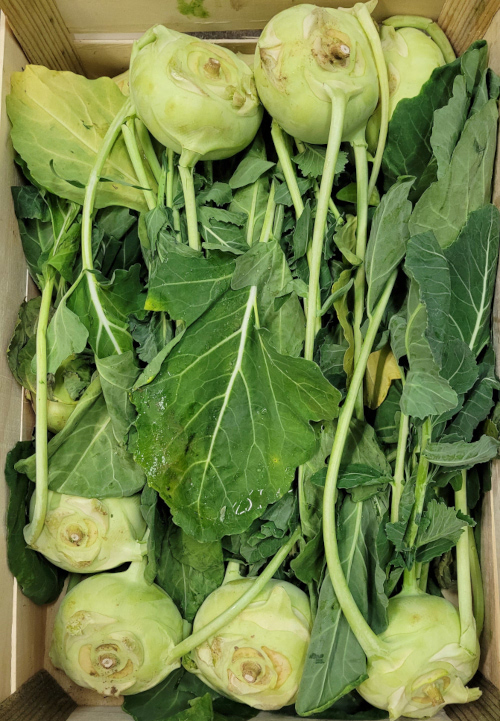
Kohlrabi
Its bulb is crisp and juicy when raw, with a flavour that combines the sweet nuttiness of broccoli stems and the gentle peppery bite of a mild radish.
Pairing Suggestions: Kohlrabi’s crispness makes it ideal for raw salads and slaws, where it works beautifully with citrus, apple, fennel, and fresh herbs such as dill or parsley.
Dish Idea: A raw kohlrabi and apple slaw with a dill and crème fraîche dressing—clean, bright and perfect alongside grilled pork or oily fish.
Parsnips, Carrots, & Radishes
Parsnips bring sweet earthiness; carrots are crisp and sweet; radishes offer spicy bite.
Pairing Suggestions: Honey, thyme (parsnips), coriander or cumin (carrots), butter or dill (radish).
Dish Idea: Trio roasted root salad: honey-glazed parsnips, cumin-carrot sticks, and shaved radish tossed with butter and dill.
Peppers & Chillies
Sweet peppers range from the grassy freshness of green to the mellow fruitiness of yellow and the deep, almost honeyed sweetness of fully ripened red. Chillies add heat and complexity, but their flavour is just as important as their spice.
Pairing Suggestions: They both pair incredibly well with tomatoes, garlic, herbs, citrus, chocolate (in savoury contexts).
Dish Idea: Roasted red pepper and chilli coulis—bright and versatile for drizzling over fish, poultry or charcuterie.
Potatoes (Maincrop), Swedes, Turnips
Potatoes are creamy when mashed or roasted; swedes are sweet and earthy; turnips spicy when raw, sweet when cooked.
Pairing Suggestions: Butter, cream, roasted meats, nutmeg (swedes), horseradish (turnips).
Dish Idea: Layered gratin of potatoes, swede and turnip with sage-infused cream.
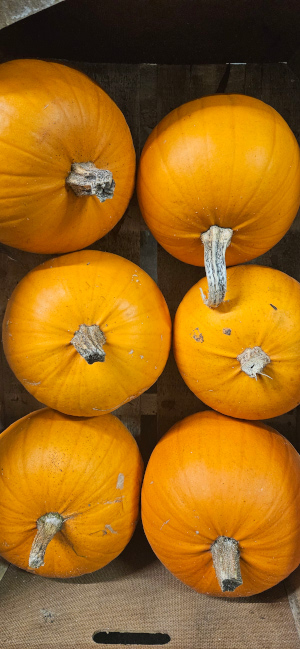
Pumpkins & Winter Squashes
Pumpkins are mildly sweet with a light earthiness. The flesh is firm yet tender when roasted, becoming creamy when pureed. Squashes are universally popular for its nutty sweetness and smooth, velvety texture. When roasted, its sugars caramelise, yielding a rich, almost toffee-like note.
Pairing Suggestions: Pumpkins and squashes pair beautifully with warming spices (nutmeg, cinnamon, clove, cumin, coriander), as well as herbs like sage, rosemary, and thyme.
Dish Idea: A roasted Crown Prince squash wedge with sage-infused brown butter and toasted pumpkin seeds—simple, elegant, and a showcase of the season’s best..
Spinach, Spring Onions, Runner Beans, Lettuce & Salad Leaves, Wild Mushrooms, Samphire
Spinach: Tender, mildly earthy—excellent in pasta, warm salads, or as a wilted garnish.
Spring Onions: Delicate crunch, light onion character—great grilled or in slaws.
Runner Beans: Crisp and sweet—fantastic pickled, blanched, or in warm salads with bacon
Wild Mushrooms: Earthy, aromatic—perfect sautéed with garlic and thyme.
Samphire: Salty, succulent— outstanding foil to shellfish or as pickled garnish
Salad Leaves & Greens in Season
September’s salad selection includes both familiar and nuanced leaves, allowing you to craft complex, textural, and flavourful salads:
Lettuce & Common Salad Leaves
Varieties like butterhead, little gem, or leaf lettuce offer sweet, tender freshness. Pair with creamy dressings or crisply acidic vinaigrettes.
Rocket (Arugula / Wild Rocket)
Rocket is renowned for having a peppery, fresh spice; robust enough to hold up in hearty dressings.
Pairing Suggestions: Aged cheeses, citrus, anchovy, garlic, olive oil.
Dish Idea: Rocket and Parmesan caesar-style salad with crispy anchovy shards.
Cornsalad (Mâche / Lamb’s Lettuce)
Cornsalad has a nutty, delicate, soft mouthfeel.
Pairing Suggestions: Nut oils, citrus, seasonal berries, crushed nuts.
Dish Idea: Mâche and blackberry salad with a walnut-citrus dressing.
Oriental Salad Leaves (Mizuna, Mibuna, Texsel Greens, Orach)
Mizuna is mildly peppery; Texsel is garlicky and orach is sweet, subtly earthy.
Pairing Suggestions: Soy, sesame, light vinaigrettes, citrus, mild cheese.
Dish Idea: Mixed oriental leaves sautéed briefly in sesame oil with a splash of rice wine vinegar.
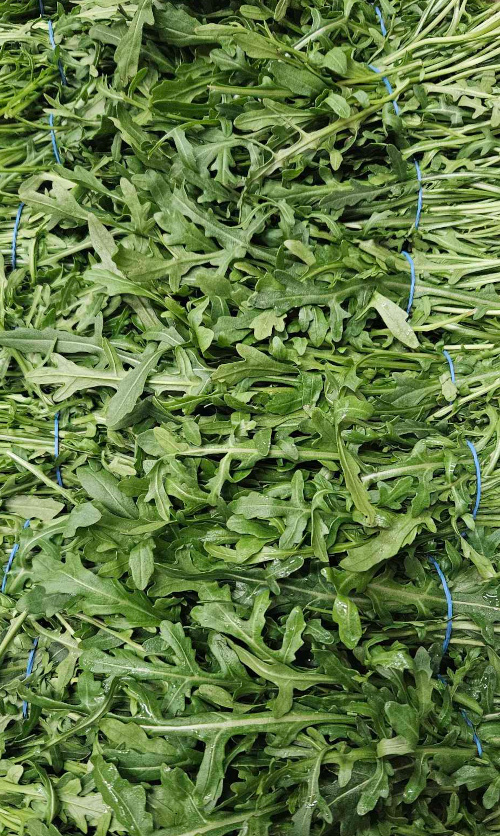
Salad Burnet
At its core, salad burnet has a clean, refreshing taste often compared to cucumber, though with a more complex herbal edge.
Pairing Suggestions: Because of its cucumber-like freshness, salad burnet works beautifully with creamy bases—yoghurt, crème fraîche, cream cheeses, and light vinaigrettes.
Dish Idea: Finely chopped salad burnet folded into a lemon and crème fraîche dressing for grilled trout—delivering clean, herbaceous brightness against rich, oily fish.
Best International Vegetables in Season in August
While celebrating local produce is important, let’s not forget the delightful international vegetables that can add diversity to your dishes.
These vegetables, although not grown in the UK, are perfect for enhancing British summer menus:
Belgian Endive
Raw Belgian endive is crisp, juicy, and slightly bitter, with a delicate nutty undertone and a faint sweetness that lingers. The bitterness is more restrained than other chicories, making it approachable yet still intriguing.
Dish Idea: Braised Belgian endive with ham and Gruyère, finished under the grill until bubbling and golden—a classic French-inspired side that delivers both elegance and comfort.
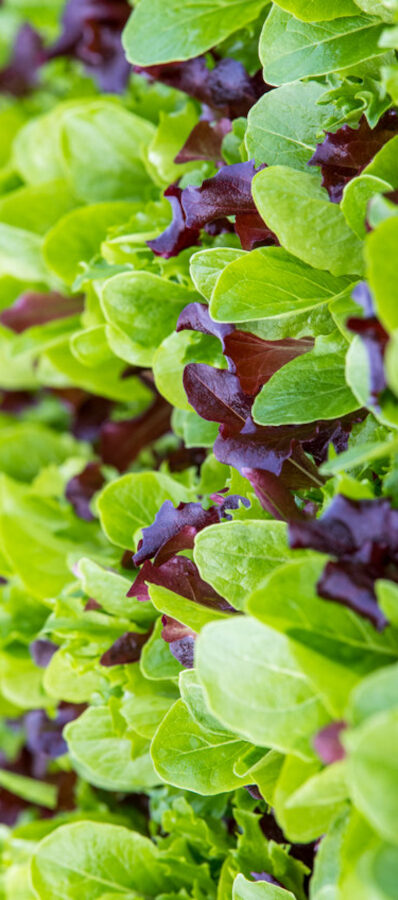
Mesclun Mixes (Provence-style salad blends)
Typically includes chervil, arugula, endive, chive, baby spinach, frisée, radicchio or sorrel — each adds nuanced flavours and textures.
Dish Idea: Mesclun micro-salad atop citrus-poached salmon—a delicate burst of freshness.
Sorrel
The flavour is clean, tart, and slightly grassy, with a citrus-like bite that cuts through richness beautifully. Younger leaves are milder, offering a refreshing snap of acidity that can be eaten raw in salads or used as garnish.
Dish Idea: Classic sorrel velouté with potato and crème fraîche—silky, sharp, and perfectly matched to a garnish of smoked trout or poached egg.
September’s bounty encourages chefs to blend summer’s vibrancy with autumn’s warming textures and depth. Whether that means pairing roasted beetroot with chèvre, weaving charred courgettes into pasta, or finishing a fish dish with a sorrel-brightened velouté, there’s a limitless canvas of autumnal potential.
At Four Seasons Fruiterers, you’re partnering with a family-run business devoted to supplying the finest seasonal produce to accomplished chefs—and this September, that means access to exceptional British heritage and early autumn vegetables, complemented by premium international items that elevate your menus.
Let these seasonal flavours inspire your culinary creations, allowing you to craft exquisite dishes that celebrate summer’s bounty. For more information on seasonal produce, get in touch on 01793 683299 or email enquiries@fsfruit.co.uk and continue to innovate your menus with the best of what August has to offer.




